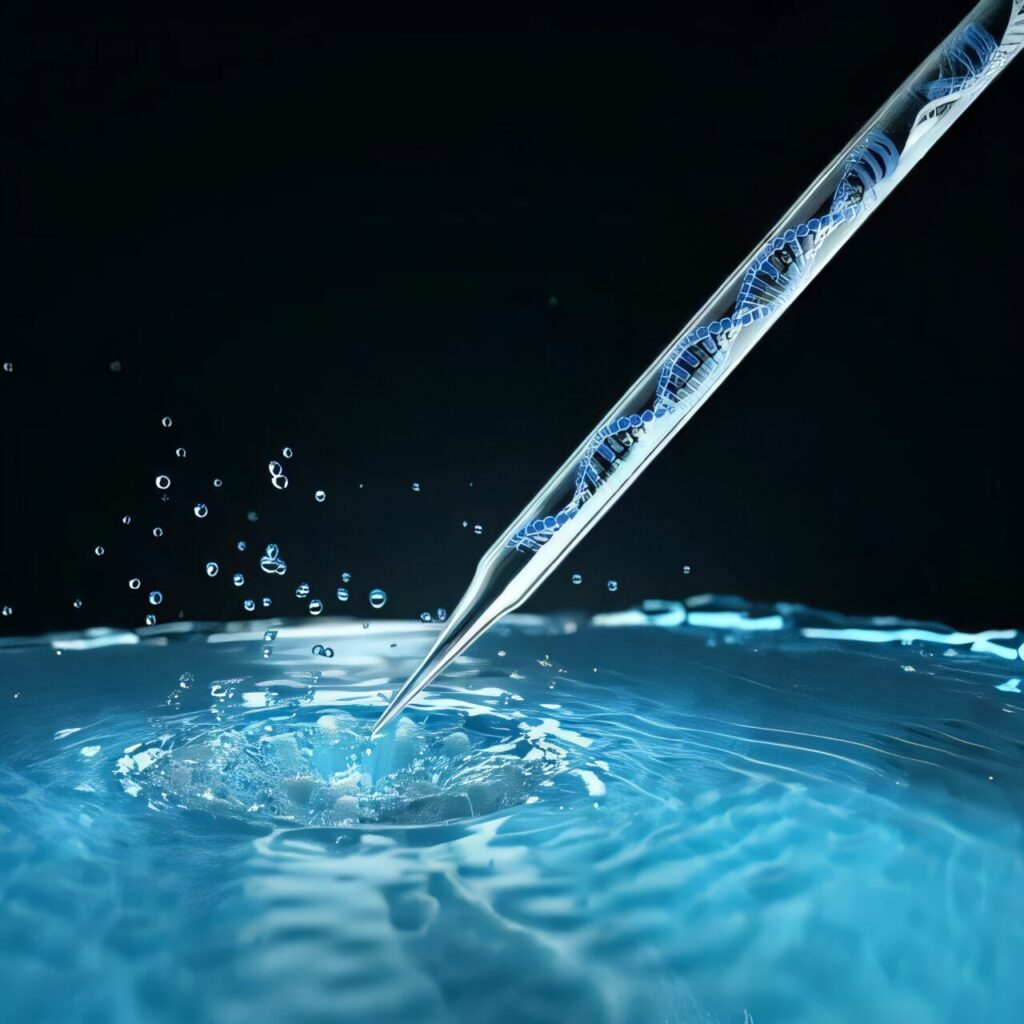UC Riverside scientists have developed a nanopore-based tool that could help diagnose illnesses much faster and with greater precision than current tests allow, by capturing signals from individual molecules.
Since the molecules scientists want to detect—generally certain DNA or protein molecules—are roughly one-billionth of a meter wide, the electrical signals they produce are very small and require specialized detection instruments.
“Right now, you need millions of molecules to detect diseases. We’re showing that it’s possible to get useful data from just a single molecule,” said Kevin Freedman, assistant professor of bioengineering at UCR and lead author of a paper about the tool appearing in Nature Nanotechnology. “This level of sensitivity could make a real difference in disease diagnostics.”
Freedman’s lab aims to build electronic detectors that behave like neurons in the brain and can retain memories: specifically, memories of which molecules previously passed through the sensor. To do this, the UCR scientists developed a new circuit model that accounts for small changes to the sensor’s behavior.
At the core of their circuit is a nanopore—a tiny opening through which molecules pass one at a time. Biological samples are loaded into the circuit along with salts, which dissociate into ions.
If protein or DNA molecules from the sample pass through the pore, this reduces the flow of ions that can pass.
“Our detector measures the reduction in flow caused by a protein or bit of DNA passing through and blocking the passage of ions,” Freedman said.
To analyze the electrical signals generated by the ions, Freedman suggests, the system needs to account for the likelihood that some molecules may not be detected as they pass through the nanopore. What distinguishes this discovery is that the nanopore is not just a sensor but itself acts as a filter, reducing background noise from other molecules in a sample that could obscure critical signals.
Traditional sensors require external filters to remove unwanted signals, and these filters can accidentally remove valuable information from the samples. Freedman’s approach ensures that each molecule’s signal is preserved, boosting accuracy for diagnostic applications.

Freedman envisions the device being used to develop a small, portable diagnostic kit—no larger than a USB drive—that could detect infections in the earliest stages. While today’s tests may not register infections for several days after exposure, nanopore sensors could detect infections within 24 to 48 hours. This capability would provide a significant advantage for fast-spreading diseases, enabling earlier intervention and treatment.
“Nanopores offer a way to catch infections sooner—before symptoms appear and before the disease spreads,” Freedman said. “This kind of tool could make early diagnosis much more practical for both viral infections and chronic conditions.”
In addition to diagnostics, the device holds promise for advancing protein research. Proteins perform essential roles in cells, and even slight changes in their structure can affect health. Current diagnostic tools struggle to tell the difference between healthy and disease-causing proteins because of their similarities. The nanopore device, however, can measure subtle differences between individual proteins, which could help doctors design more personalized treatments.
The research also brings scientists closer to achieving single-molecule protein sequencing, a long-sought goal in biology. While DNA sequencing reveals genetic instructions, protein sequencing provides insight into how those instructions are expressed and modified in real time. This deeper understanding could lead to earlier detection of diseases and more precise therapies tailored to each patient.
“There’s a lot of momentum toward developing protein sequencing because it will give us insights we can’t get from DNA alone,” Freedman said. “Nanopores allow us to study proteins in ways that weren’t possible before.”
Nanopores are the focus of an effort in which Freedman’s team will attempt to sequence single proteins. This work builds on his previous research on refining the use of nanopores for sensing molecules, viruses, and other nanoscale entities. He sees these advances as a sign of how molecular diagnostics and biological research may shift in the future.
“There’s still a lot to learn about the molecules driving health and disease,” Freedman said. “This tool moves us one step closer to personalized medicine.”
Freedman expects that nanopore technology will soon become a standard feature in both research and health care tools. As the devices become more affordable and accessible, they could find a place in everyday diagnostic kits used at home or in clinics.
“I’m confident that nanopores will become part of everyday life,” Freedman said. “This discovery could change how we’ll use them moving forward.”


